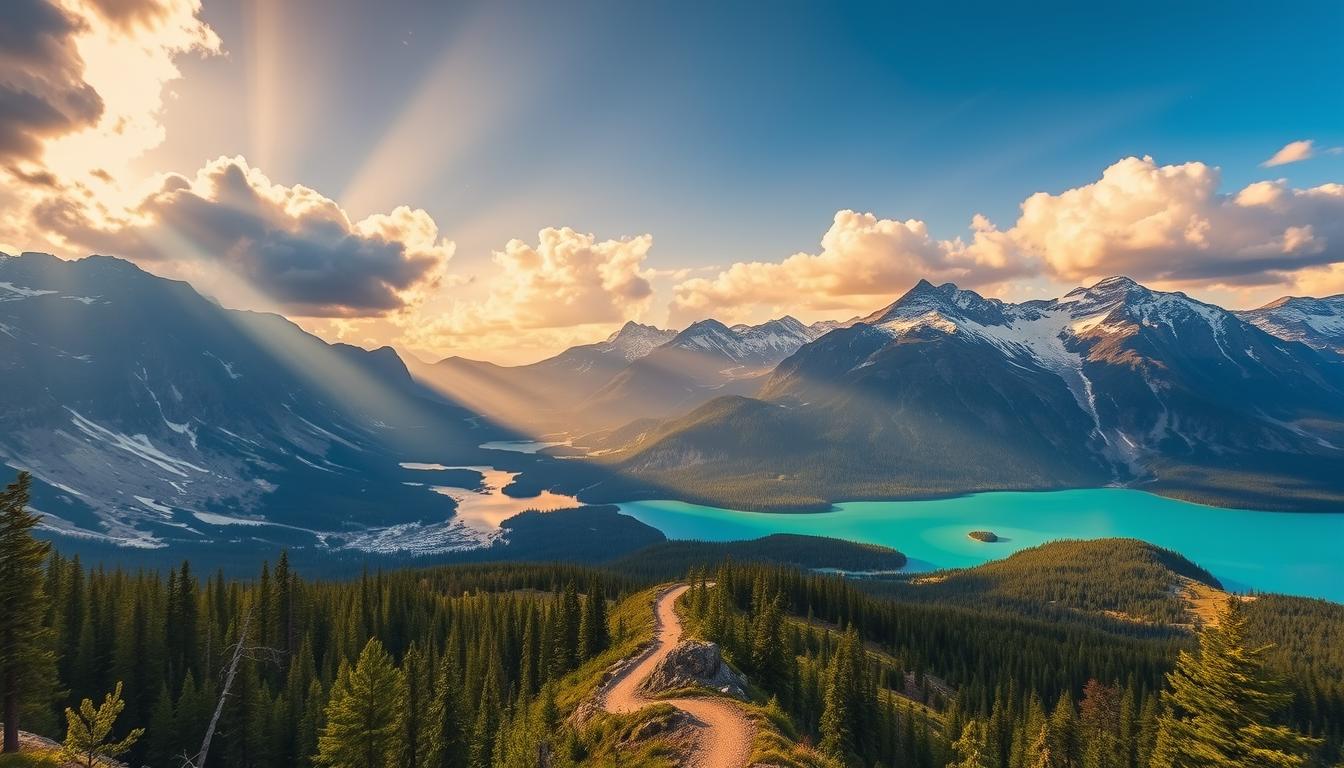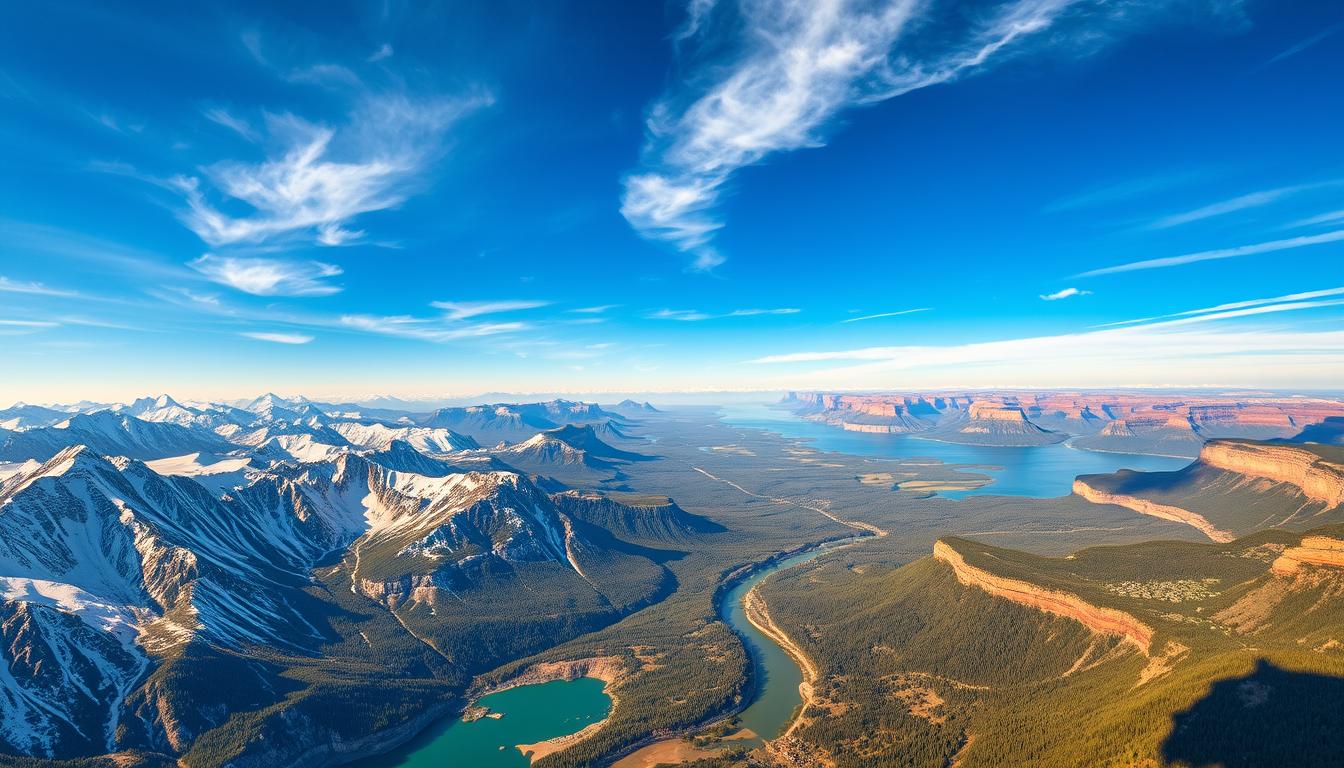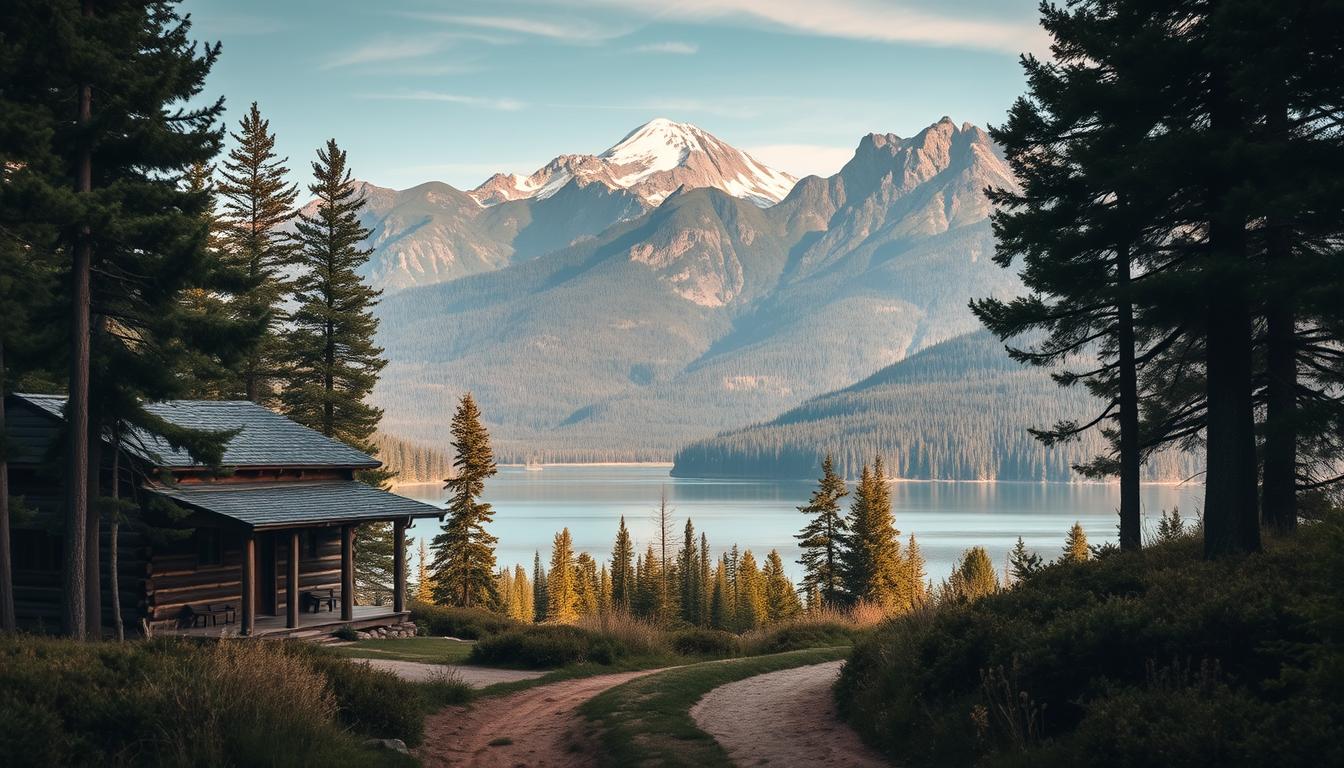Since 1904, the U.S. National Park Service has recorded more than 16.4 billion visits to its diverse landscapes, from mountain vistas to seaside wildernesses.
We’re about to embark on a journey through America’s most breathtaking natural treasures – the national parks that showcase the country’s diverse landscapes and ecosystems.
These incredible destinations attract millions of visitors each year, offering unparalleled opportunities to connect with nature and witness some of the most spectacular scenery in the world.
Key Takeaways
- Discover the top 10 national parks to visit in the US
- Explore the diverse landscapes and ecosystems within these parks
- Learn about the unique features and attractions of each park
- Get practical tips for making the most of your visits
- Understand the significance of these natural areas and their popularity among visitors
The Natural Wonders of America’s National Park System
The United States is home to numerous national parks that preserve some of the most spectacular and diverse natural wonders on the continent. Across the country, 63 national parks protect some of the continent’s wildest places and most spectacular landscapes, from soaring mountains and fantastically sculpted canyons to rugged coastlines, vast grasslands, and towering forests – all of which provide habitat for an equally varied array of wildlife.
The Evolution of America’s Best Idea
The concept of national parks has evolved significantly since its inception. Initially focused on preserving iconic natural wonders, the national park system has grown to encompass a broader range of ecosystems and landscapes. Today, these parks not only protect breathtaking rivers and pristine lakes but also serve as vital sanctuaries for North America‘s wildlife, safeguarding critical habitats for thousands of species.
We’re fortunate that America’s national parks protect an astonishing diversity of landscapes, from the world’s largest collection of geysers in Yellowstone to the deepest canyon on the continent at Grand Canyon. This diversity is a testament to the country’s rich geological and ecological heritage.
Diversity of Landscapes and Ecosystems
The national park system in the US is remarkable for its diverse landscapes and ecosystems. From the ancient forests of the Pacific Northwest to the otherworldly desert landscapes of the Southwest, these parks showcase the remarkable geological and ecological diversity found across the United States.
The variety of ecosystems protected within the national park system includes alpine tundra, temperate rainforests, coral reefs, grasslands, wetlands, and desert environments. These protected landscapes contain some of America’s most precious natural resources, including pristine lakes, wild rivers, ancient trees, and unique geological formations that tell the story of our planet’s history.
Must-Visit National Parks in the US: An Overview
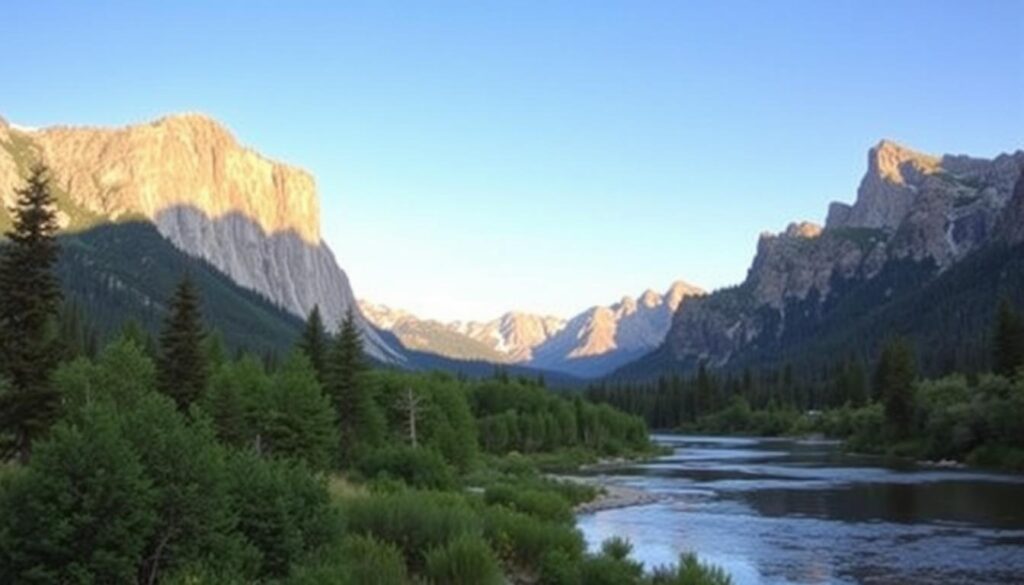
With so many incredible national parks to explore, the US offers a unique adventure for every kind of traveler. The national parks are not just areas of natural beauty but also hold significant cultural and historical importance.
What Makes These Parks Special
The US national parks are renowned for their diverse landscapes and ecosystems. From the geothermal wonders of Yellowstone to the towering granite cliffs of Yosemite, each park offers a unique experience. The diversity of flora and fauna across these parks is astounding, making them a paradise for hiking enthusiasts and nature lovers.
Visitors can explore the scenic trails, witness breathtaking vistas, and experience the rich biodiversity that these parks protect. The national parks are a testament to the country’s commitment to preserving its natural heritage for future generations.
Planning Your National Park Adventure
Planning your national park visit in advance is crucial, especially during peak season. Due to staffing cuts, the National Park Service is stretched, leading to longer wait times and fewer services. Some popular parks have implemented timed entry reservations to manage visitor numbers.
We recommend researching each park’s specific regulations, trail conditions, and reservation requirements. Consider purchasing an America the Beautiful Pass for access to multiple parks within a year. Packing essentials like water, appropriate footwear, sun protection, and a first aid kit will ensure a safe and enjoyable adventure.
To avoid the crowds, explore beyond the most popular viewpoints and trails. Discovering the less-visited areas of each park can lead to a more profound connection with nature and a more memorable experience for visitors.
Yellowstone National Park: The World’s First National Park
Spanning over 3,000 square miles, Yellowstone National Park is a vast wilderness area filled with geysers, hot springs, and diverse wildlife.
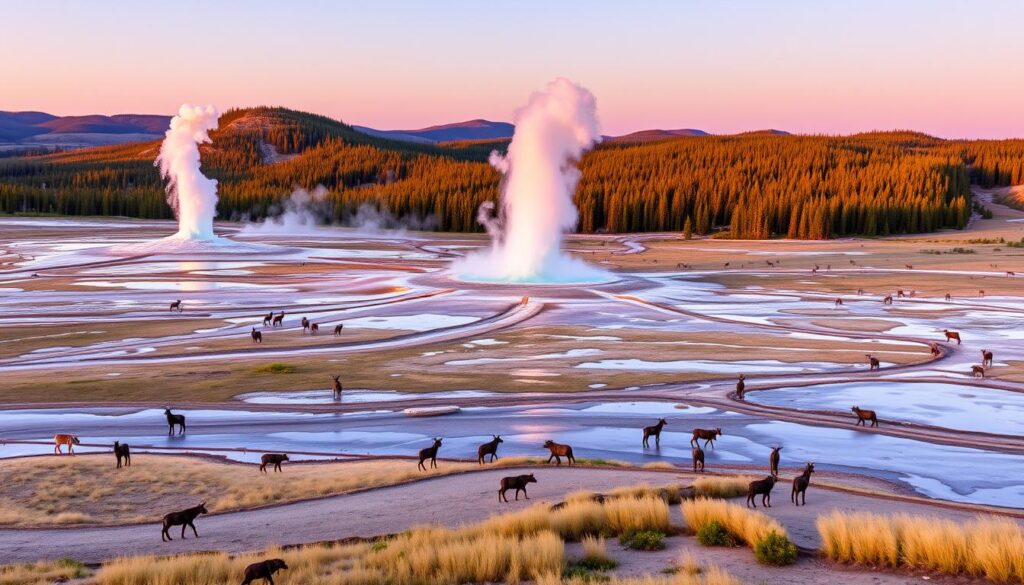
Geothermal Wonders and Old Faithful
Yellowstone is home to an incredible array of geothermal features, with Old Faithful being the most iconic. This geyser erupts regularly, shooting steam and water up to 185 feet in the air. The park’s geothermal wonders are a result of its unique geology, sitting atop a volcanic hotspot.
The geothermal features in Yellowstone are not limited to Old Faithful; the park is home to over 10,000 geysers and hot springs, including the colorful Grand Prismatic Spring, the largest hot spring in the United States.
Wildlife Viewing in America’s Serengeti
We often refer to Yellowstone as “America’s Serengeti” because it’s home to the largest concentration of mammals in the lower 48 states, including iconic species like bison, elk, wolves, and bears. The Lamar Valley and Hayden Valley offer some of the best wildlife viewing opportunities in the park.
With luck, you may spot one of the park’s wolves or grizzly bears, though black bears are more commonly seen. We recommend exploring the park’s 370 miles of paved roads and venturing onto some of the 1,000+ miles of hiking trails to experience Yellowstone’s wilderness and increase your chances of wildlife encounters.
- The Lamar Valley and Hayden Valley are renowned for their free-roaming herds of bison and elusive predators.
- Yellowstone provides critical habitat for grizzly bears, with approximately 150 grizzlies living within the park boundaries.
- The reintroduction of wolves to Yellowstone in the 1990s represents one of the most successful wildlife conservation efforts in history.
Grand Canyon National Park: A Mile-Deep Marvel
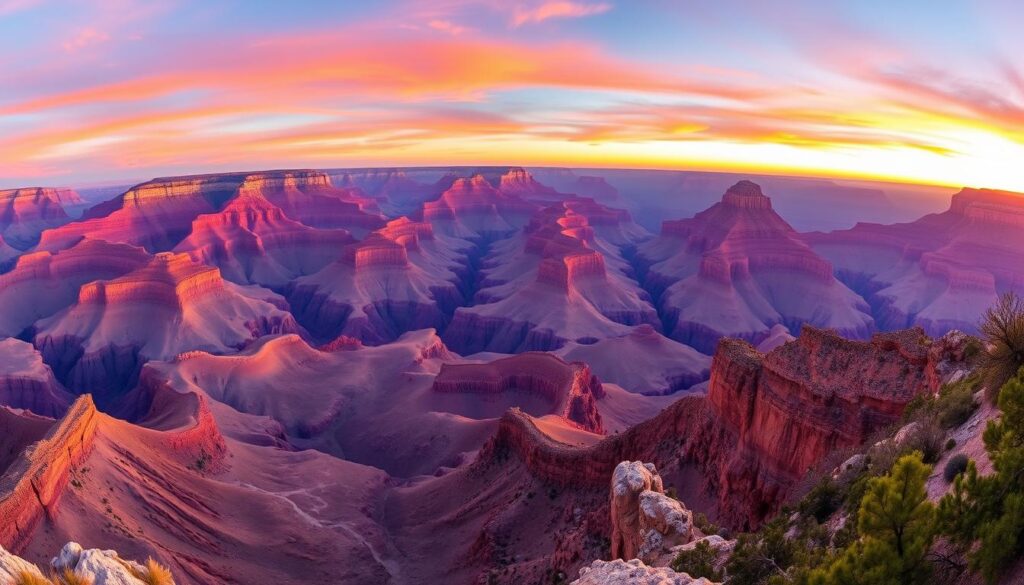
Spanning over a mile deep and 277 miles long, the Grand Canyon is a marvel that captivates visitors from around the world. We find that the Grand Canyon’s immense scale and rich geological history make it a destination that promises an unforgettable experience.
Exploring the South and North Rims
The Grand Canyon offers distinct experiences from its South and North Rims. We recommend starting at the South Rim, which is open year-round and provides easy access to many of the park’s amenities and trails. The South Rim is home to some of the most spectacular viewpoints, including Mather Point and Yavapai Point.
For those seeking a more secluded experience, the North Rim offers equally breathtaking views with fewer crowds. However, it’s worth noting that the North Rim is closed during the winter months due to heavy snowfall.
Adventures Within the Canyon
To truly experience the Grand Canyon, we believe you need to venture below the rim. Hiking into the canyon is an adventure like no other, with trails such as the Bright Angel Trail and South Kaibab Trail offering access to the inner canyon. These trails descend over 4,000 feet to the canyon floor, where hikers can explore Indian Garden and Phantom Ranch.
For a unique perspective, consider a mule ride down into the canyon or a hiking trip along the trails that crisscross the canyon’s vast expanse. Alternatively, rafting down the Colorado River provides an exhilarating way to experience the Grand Canyon’s grandeur from within.
Yosemite National Park: Granite Cliffs and Towering Waterfalls
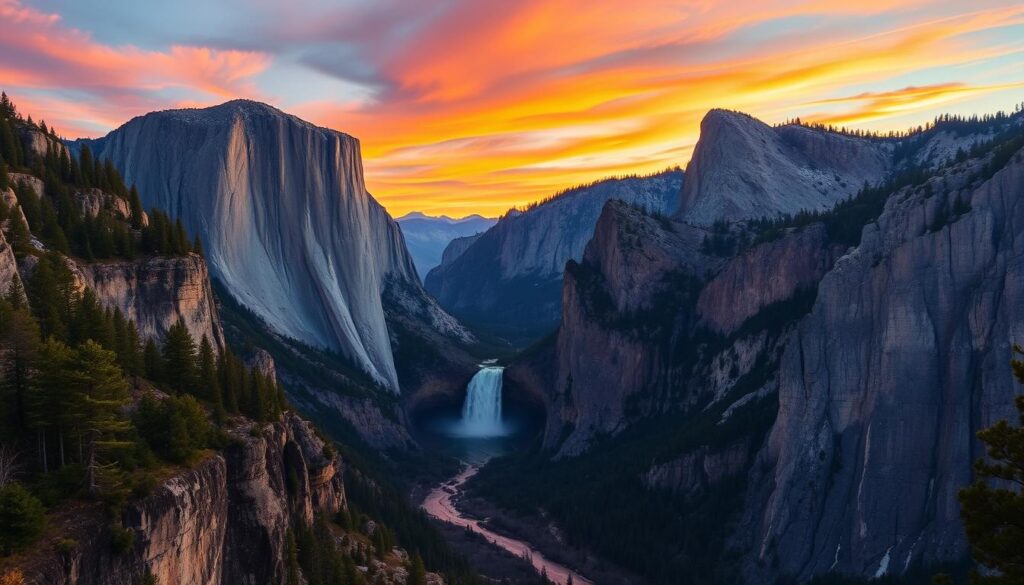
The natural beauty of Yosemite National Park, with its towering granite cliffs and serene valleys, captivates visitors from around the globe. The park continues to exert a magnetic pull on modern-day visitors with its glorious landscapes.
Iconic Landmarks from Half Dome to El Capitan
Yosemite is home to some of the world’s most iconic natural landmarks, including Half Dome and El Capitan. These granite monoliths are not only breathtaking in their scale but also offer world-class climbing opportunities. The park’s diverse landscapes, including its many waterfalls and valleys, provide endless opportunities for exploration and adventure.
Seasonal Highlights and Photography Opportunities
Each season in Yosemite offers distinct highlights. Spring brings roaring waterfalls and wildflower meadows, while summer offers access to high mountains and trails. In the fall, the valleys are painted with golden colors, and winter transforms the park into a serene snow-covered wonderland. For photography enthusiasts, Yosemite presents endless opportunities to capture iconic landscapes in changing light.
We encourage visitors to explore Yosemite’s high country along Tioga Road, where subalpine meadows, pristine lakes, and granite domes offer a different perspective of the park’s diverse mountains environments. Tuolumne Meadows, at 8,600 feet elevation, provides access to spectacular high-country trails, including portions of the famous John Muir Trail and Pacific Crest Trail that traverse the park.
Zion National Park: Sandstone Canyons and Epic Hikes
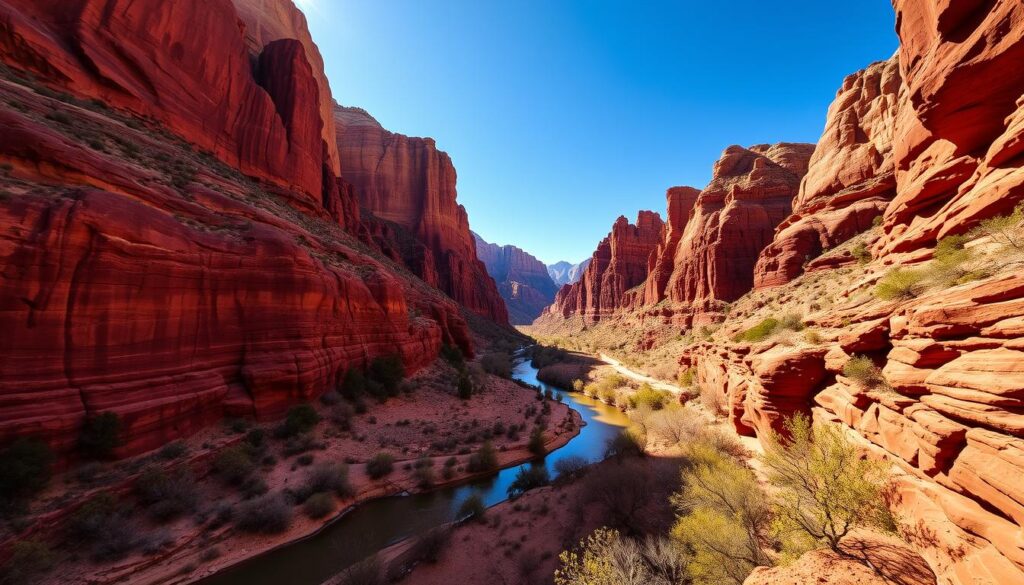
The Virgin River, which carves its way through Zion Canyon, creates a breathtaking landscape that attracts millions of visitors each year. Rising in Utah’s high plateau country, the river’s path through the sandstone and limestone has formed one of the most spectacular canyons in the United States.
Conquering Angels Landing and The Narrows
Zion National Park offers a range of hiking trails for all skill levels, from easy day hikes to multi-day backcountry trips. For experienced hikers, Angels Landing is a must-conquer, offering spectacular views of the canyon below. Alternatively, wading through the Virgin River in The Narrows provides a unique and exhilarating experience.
We recommend preparing for these hikes by checking the weather and trail conditions, as well as bringing appropriate gear and supplies.
Scenic Drives and Accessible Viewpoints
For those who prefer not to hike or have limited mobility, Zion National Park offers several scenic drives and accessible viewpoints. The 6-mile Zion Canyon Scenic Drive is a highlight, with the park’s free shuttle system stopping at major trailheads and viewpoints along the way.
Notable stops include the Zion Human History Museum, the Court of the Patriarchs viewpoint, and the paved Riverside Walk, which leads to the entrance of The Narrows. The towering sandstone cliffs of Zion, some rising more than 2,000 feet from the canyon floor, display a remarkable palette of colors that shift throughout the day.
Outside the main canyon, the Kolob Canyons section in the northwestern part of the park offers a less-visited alternative with its own scenic drive and spectacular finger canyons with crimson cliffs. Visitors can enjoy these scenic views over several miles of driving.
Acadia National Park: Where Mountains Meet the Sea
Nestled on the coast of Maine, Acadia National Park offers a unique blend of natural beauty and rich history. In 2024, more than 3.7 million people visited this stunning park, drawn by its diverse landscapes and outdoor activities.
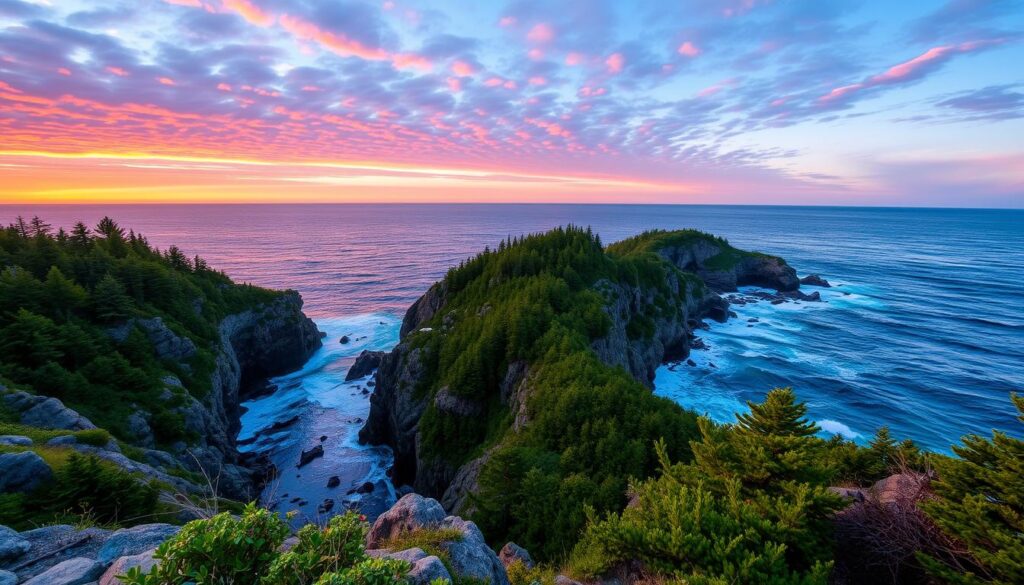
Cadillac Mountain and Coastal Wonders
One of the park’s most iconic attractions is Cadillac Mountain, the highest point on the East Coast. Visitors can drive to the summit or hike one of the many trails, such as the Cadillac Mountain trail, which offers breathtaking views of the surrounding mountains and lakes.
The park’s rugged coastline is another major draw, with its dramatic shoreline and picturesque coves. Exploring the coast by bike or on foot reveals hidden gems and opportunities to experience the park’s natural beauty up close.
Carriage Roads and Historic Charm
Acadia’s 45-mile network of carriage roads is one of its most distinctive features. Built by philanthropist John D. Rockefeller Jr. between 1913 and 1940, these crushed-stone roads provide vehicle-free access to the park’s interior. Visitors can explore the carriage roads by bike, walking, or horseback riding, enjoying the scenic views of forests, mountains, and lakes along the way.
The historic charm of nearby Bar Harbor complements the park experience, offering visitors a quintessential New England coastal town with restaurants, shops, and accommodations. The park’s rich cultural history, from the Native American Wabanaki people to the Gilded Age summer cottages, adds depth to the visitor experience.
Olympic National Park: Three Parks in One
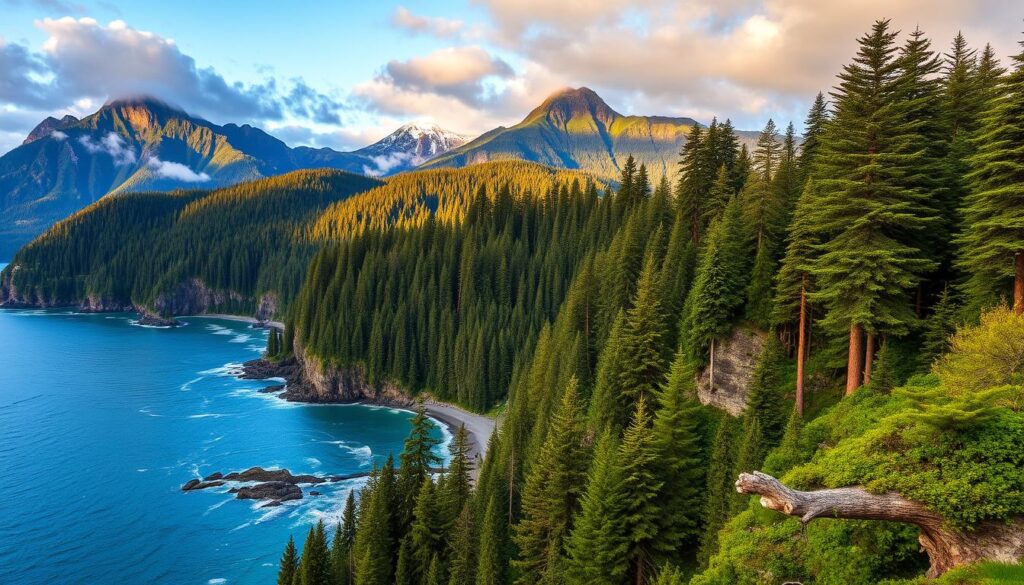
Nestled in the Pacific Northwest, Olympic National Park offers a unique blend of ecosystems, making it a fascinating destination for nature enthusiasts. This park is a testament to the incredible diversity of landscapes that can be found in the United States, ranging from temperate rainforests to rugged mountains and wild coastlines.
Temperate Rainforests and Wild Coastlines
The park is home to some of the largest temperate rainforests in the US, with the Hoh and Quinault rainforests being prime examples. These areas are characterized by huge hemlock, fir, spruce, and cedar trees covered in mosses, ferns, and lichens, creating a lush, green environment. Hiking the trails in these areas allows visitors to admire the many shades of green while looking out for wildlife, including Roosevelt elk.
The coastline of Olympic National Park is equally impressive, with its rugged shores and scenic beaches. The wild coastlines offer breathtaking views and a chance to explore tidepools and witness the raw power of the Pacific Ocean.
Alpine Meadows and Mountain Vistas
For those who prefer higher elevations, the mountains and peaks of Olympic National Park offer panoramic views and a range of outdoor activities. Driving up to Hurricane Ridge rewards visitors with stunning vistas of the Olympic Mountains’ jagged peaks and the Strait of Juan de Fuca. In the summer, the subalpine meadows are filled with colorful wildflowers, while in the winter, the area transforms into a small ski and snowboard destination.
With over 600 miles of trails, the park caters to hikers of all levels, from short nature walks to challenging multi-day backpacking routes that traverse multiple ecosystems. This diversity of trails ensures that every visitor can experience the beauty of Olympic National Park.
Glacier National Park: Crown of the Continent
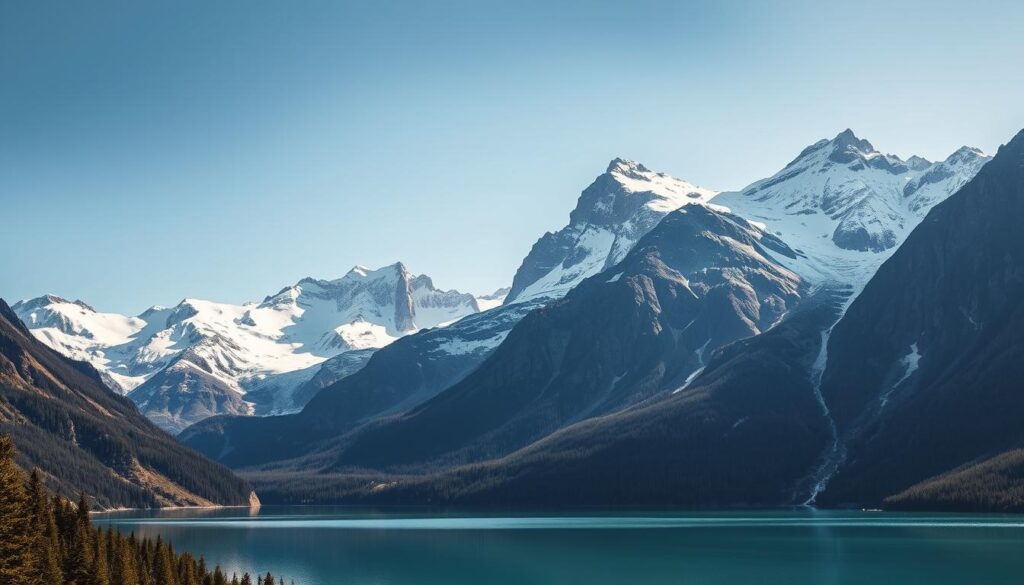
As one of America’s most stunning national parks, Glacier National Park offers an unforgettable experience with its majestic glaciers and abundant wildlife. The park’s ecosystems are home to a diverse range of wildlife, including grizzly bears, moose, beaver, bighorn sheep, elk, and mountain goats.
Going-to-the-Sun Road and Alpine Scenery
The Going-to-the-Sun Road is a scenic drive that traverses the park, offering breathtaking views of alpine scenery, glaciers, and towering mountains. This 50-mile road is a marvel of engineering and provides access to many of the park’s most spectacular attractions.
As you drive along Going-to-the-Sun Road, you’ll have the opportunity to stop at numerous viewpoints, hike to hidden lakes, and take in the majesty of the surrounding mountains.
Disappearing Glaciers and Conservation Efforts
Unfortunately, the glaciers that gave Glacier National Park its name are rapidly disappearing due to climate change. The park once contained over 150 glaciers in 1850, but now has fewer than 25, and scientists predict that all may be gone by 2030.
Despite the challenges posed by climate change, conservation efforts are underway to protect the park’s ecosystems and wildlife. These efforts include maintaining wildlife corridors, protecting water quality, managing invasive species, and educating visitors about the impacts of climate change.
We urge visitors to see Glacier National Park‘s remaining ice fields soon, as they are a rare and awe-inspiring sight. The park remains a biodiversity hotspot and one of the most intact ecosystems in the world, home to all the major predators that existed when European explorers first arrived.
Great Smoky Mountains National Park: Biodiversity Hotspot
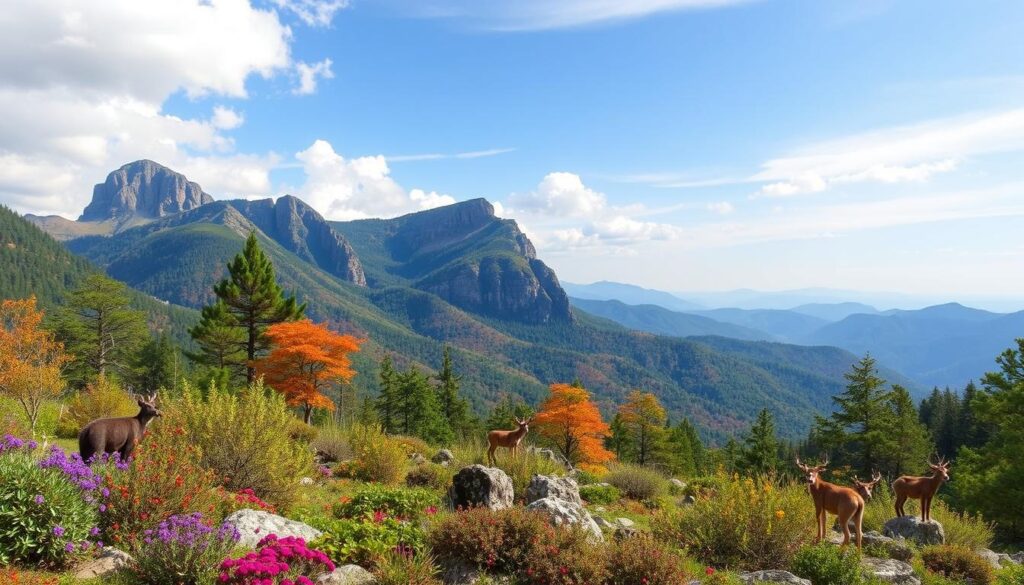
Nestled in the heart of the Appalachian Mountains, Great Smoky Mountains National Park is a haven for nature lovers and historians alike. The park’s diverse landscapes and ecosystems make it an ideal destination for those seeking to explore the great outdoors.
Ancient Forests and Spectacular Fall Colors
The Great Smoky Mountains are home to some of the most ancient forests in the world, with trees that are over 500 years old. The park’s forests are particularly renowned for their spectacular fall colors, attracting visitors from all over the world.
The changing foliage is a breathtaking sight, with the mountainsides turning shades of red, orange, and gold. This natural spectacle is a result of the park’s diverse tree species, including sugar maples, oaks, and hickories.
Wildlife Viewing and Cultural History
The park is a wildlife enthusiast’s paradise, with approximately 1,500 black bears calling the Smokies home. In addition to bears, the park is home to over 200 species of birds, 67 native fish species, and numerous other animals.
Beyond its natural beauty, the park is also rich in cultural history. Cades Cove, a historic valley, offers a glimpse into the lives of the people who lived in the Smokies before the park’s establishment. The Oconaluftee area preserves the heritage of the Cherokee people, with the Mountain Farm Museum showcasing historic structures and artifacts.
Visitors to the park can explore the many hiking trails, historic sites, and scenic drives, making it an unforgettable experience. Whether you’re interested in wildlife viewing, hiking, or simply taking in the breathtaking views, Great Smoky Mountains National Park has something for everyone.
Sequoia & Kings Canyon National Parks: Land of Giants
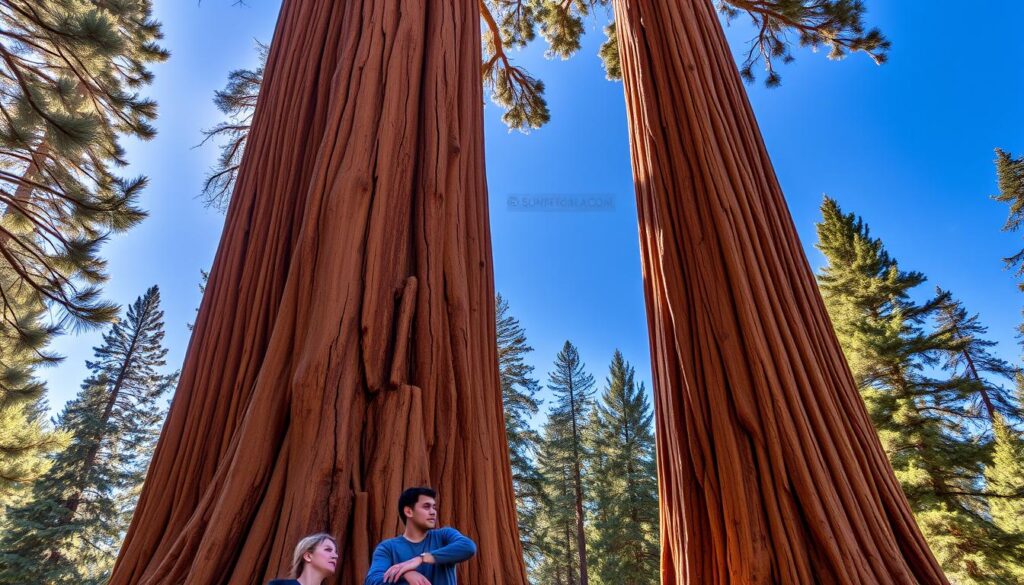
As we explore Sequoia and Kings Canyon National Parks, we discover a world of giants, from towering trees to deep canyons. These two adjacent national parks, managed as a single unit, offer a diverse range of landscapes that are sure to captivate any visitor.
Walking Among the World’s Largest Trees
The Sequoia National Park is home to some of the world’s largest trees, including the General Sherman Tree, which stands as a testament to nature’s grandeur. Walking among these giants, visitors can’t help but feel a sense of awe at their sheer size and age. The park’s giant sequoia groves are a major draw, with many trails and paths allowing visitors to explore this natural wonder.
One of the most striking aspects of these trees is their longevity; some are over 2,000 years old, having witnessed centuries of history. The park’s efforts to preserve these natural giants ensure that future generations can continue to marvel at their majesty.
Kings Canyon’s Dramatic Landscapes
Kings Canyon National Park, on the other hand, boasts dramatic landscapes that are equally impressive. The Kings Canyon Scenic Byway (Highway 180) offers breathtaking views of the canyon, which is over 8,000 feet deep in some places, making it even deeper than the Grand Canyon. The scenic drive alongside the Kings River reveals towering granite cliffs and cascading waterfalls, creating a picturesque scene that is hard to forget.
Beyond the developed areas, the park protects a vast wilderness of alpine lakes, meadows, and rugged peaks, including Mount Whitney, the highest point in the contiguous United States. For those willing to venture into the backcountry, the John Muir Trail and Pacific Crest Trail offer some of the most spectacular high-country hiking in the Sierra Nevada.
We find that many visitors are equally impressed by Kings Canyon itself, with its deep canyon and stunning scenery. The contrast between the accessible giant sequoia groves and the remote wilderness areas provides a unique experience for visitors, ranging from leisurely walks among giant trees to challenging hikes in the high country.
Essential Tips for Visiting America’s National Parks
The National Park Service is stretched thin this year due to staffing cuts, so it’s essential to be prepared. Travelers can expect longer wait times, fewer services, and the potential closures of certain areas.
Best Times to Visit and Avoiding Crowds
Some very popular parks, including Mount Rainier, Glacier, and Arches, have implemented a system of timed entry reservations during the summer high season. To avoid disappointment, check in advance if this applies to any parks you’re visiting.
Planning your visit during the off-season or early in the morning can also help minimize encounters with large crowds.
| Park | Best Time to Visit | Crowd Level |
|---|---|---|
| Yellowstone | April-May or September-October | Low |
| Grand Canyon | October-November or March-April | Medium |
| Yosemite | May-June or September-October | High |
Conservation Ethics and Responsible Tourism
We encourage all visitors to practice Leave No Trace principles in national parks by staying on designated trails, properly disposing of waste, and respecting wildlife by maintaining safe distances.
- Support conservation efforts by purchasing park passes or contributing to park foundations.
- Consider using park shuttle systems to reduce traffic congestion and environmental impact.
- Learn about the Indigenous peoples whose ancestral lands became national parks and respect their cultural connections.
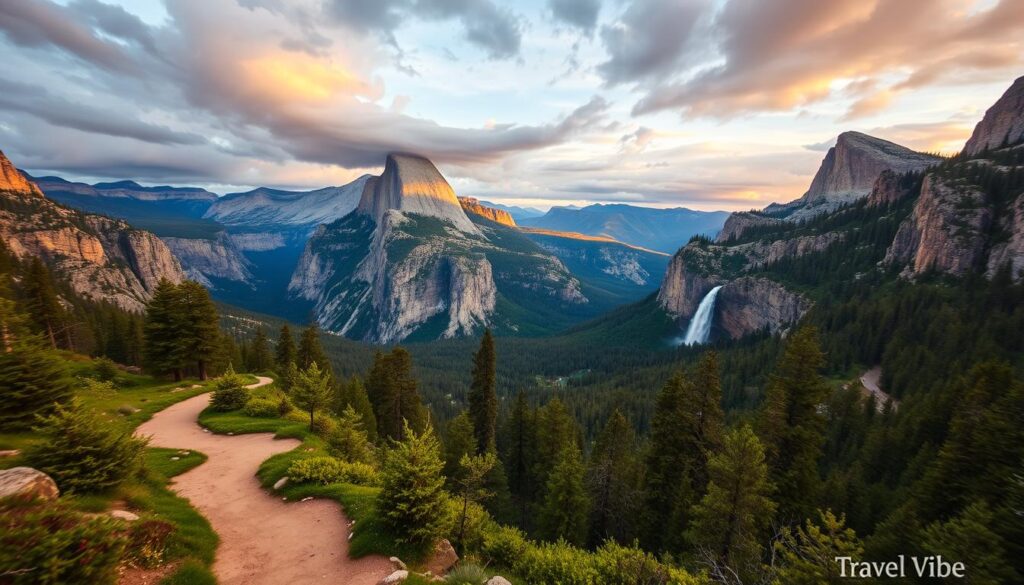
By being mindful of our impact and taking steps to minimize it, we can help preserve the beauty and integrity of our national parks for future generations.
Conclusion: Preserving America’s Natural Heritage
Having explored ten of America’s most stunning national parks, we recognize the challenges and importance of preserving our natural heritage. We’ve seen just a fraction of the 63 national parks that protect our country’s most precious natural landscapes and cultural treasures.
The national park system continues to evolve, with new parks being designated to safeguard unique ecosystems and geological wonders for future generations. However, as visitation reaches record levels, we face the challenge of balancing public access with preservation, ensuring these special places remain unimpaired for years to come.
Climate change poses a significant threat to many national parks, from disappearing glaciers to rising sea levels. We believe that experiencing these magnificent parks firsthand creates passionate advocates for conservation. At CoWrit Technologies Inc, we’re committed to sharing the stories of these natural wonders through our content writing services, helping more people discover and appreciate America’s extraordinary park system, which is truly a treasure of the world, standing on the solid rock of conservation efforts.
For more information on the national park system, visit this resource to deepen your understanding of these incredible landscapes.
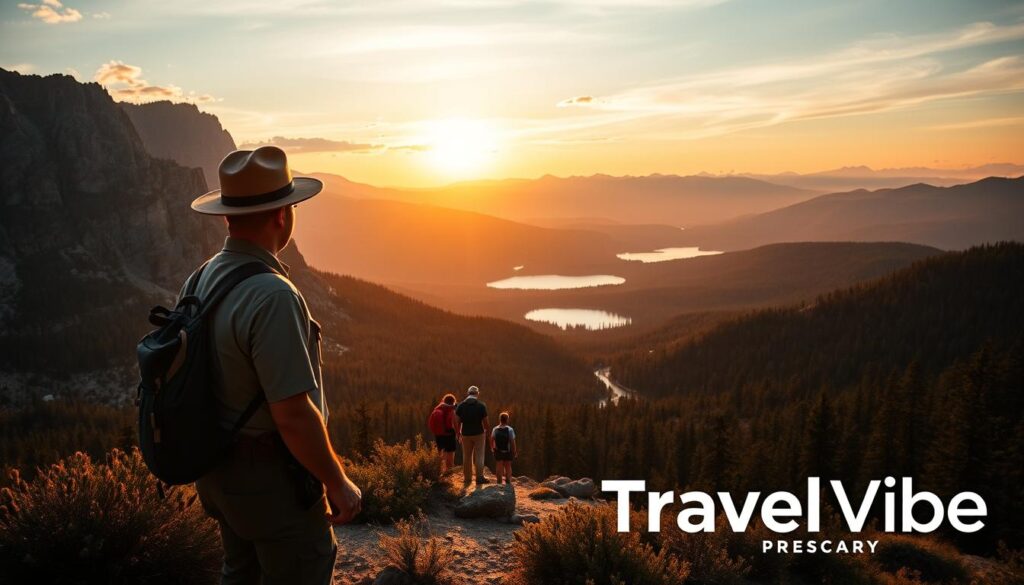
About CoWrit Technologies Inc.
At CoWrit Technologies Inc., we’re passionate about crafting compelling stories that connect people with the natural beauty of national parks, from the rugged coast of Acadia to the majestic mountain peaks of Glacier National Park.
Our team specializes in creating engaging content about travel destinations, including comprehensive guides to national parks that inspire readers to explore America’s natural wonders along the sea. We offer a full range of digital services, including AI Generative Applications and content writing, to help tourism businesses and conservation organizations share their stories effectively about various parks and national parks.
Connect with us via WhatsApp Call & Chat at +44-7822010953 to discuss how we can help promote your travel-related business.
